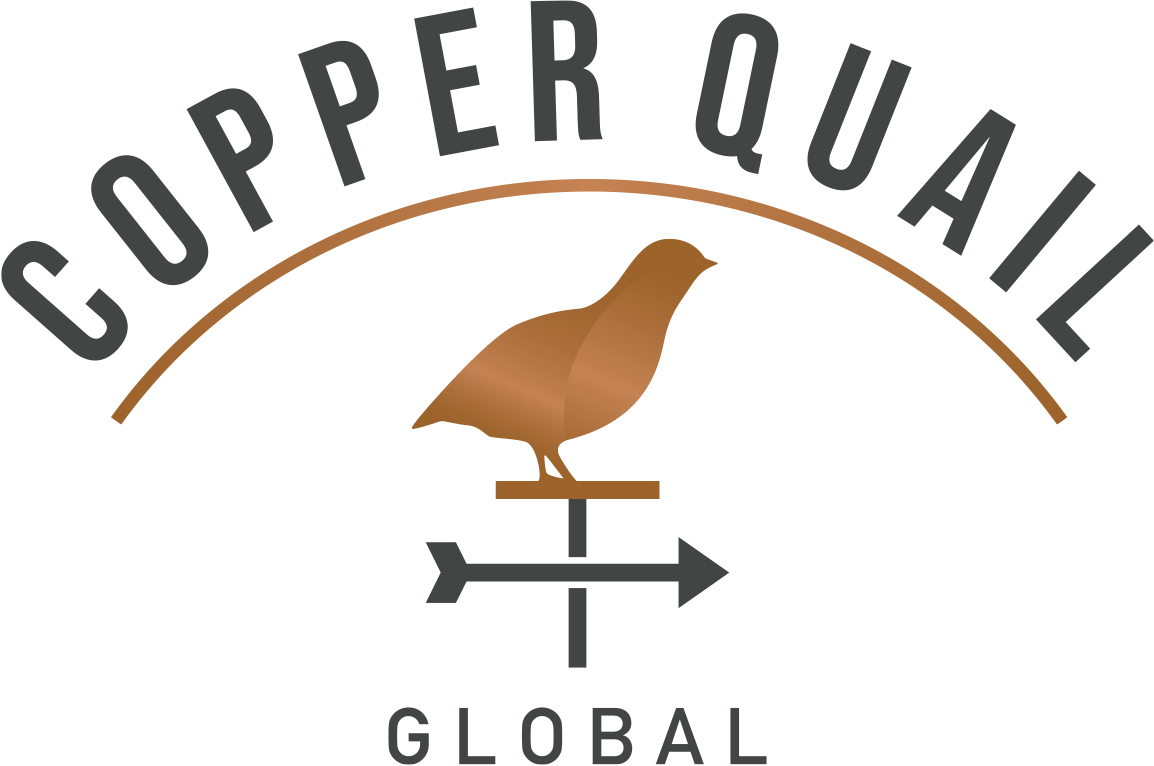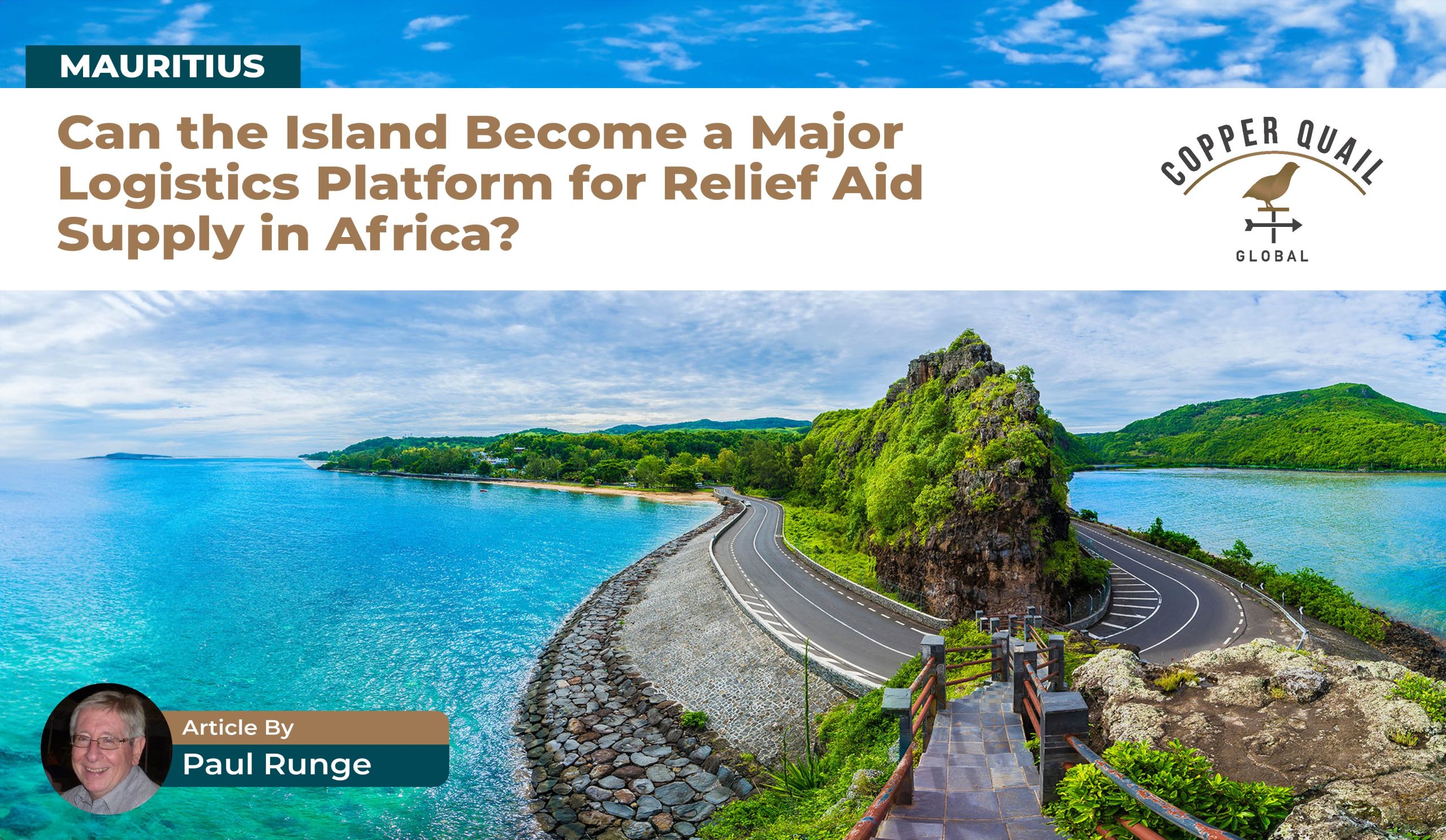MAURITIUS: CAN THE ISLAND BECOME A MAJOR LOGISTICS PLATFORM FOR RELIEF AID SUPPLY IN AFRICA?
AN IMPORTANT MISSION
I’m sitting in an Air Mauritius aircraft on my way to the island. The plane is full of tourists and honeymoon couples in casual attire – flowery shirts, short pants, sandals – and I’m stuck at the back wearing longs and a white shirt, clearly at odds with the passengers’ pervasive holiday mood. I’m not sure whether some Mauritian dignitary will be meeting me on arrival but just in case, I want to look formal and act the part of a specialist on a serious business mission!
I’ve been invited by the national business promotion agency, Enterprise Mauritius, to do a conference presentation on relief supply in sub-Saharan Africa and possible related opportunities for Mauritian companies and agencies.
Relief aid is huge business in sub-Saharan Africa. It’s almost impossible to calculate a total annual value, because there are so many agencies involved – the big United Nationsagencies such as the International Children’s Emergency Fundand the World Food Programme, the major NGO-s such as World Vision and Oxfam, and others contributors such as the Bill and Melinda Gates Foundation. There are simply too many role players producing too many reports with separate individual statistics. Official figures also seldom distinguish between relief aid and other forms of aid such as foreign developmental assistance. Whatever the total figure, it is huge.
A major misconception is that the goods requirements for relief aid comprise the overwhelmingly obvious, such as tents, mosquito nets, nutritional biscuits, cooking utensils, pumps, medicines etc. –items which help keep refugees and other desperate people alive in the bush.
While there is a need for these items, there are many other less apparent requirements, such as brick-making machines, vehicle parts, computers – a very wide range. Regarding requirements for services, transport and logistics are obvious but there are still others including medical care, engineering services, agricultural and education services, camp management, and services required for the resettlement of returning refugees.
The need for this type of aid in Africa is constant, as the trouble spots remain: Eastern DR Congo, some of the Sahel countries… plus the impacts of floods and droughts so frequent in our continent.
As I mentally prepare for my talk, the dominating themes come from the words of my good friend, the chief procurement officer for the UN High Commissioner for Refugees in South Africa: “You must make your suppliers understand that if we don’t get the right stuff at the right place at the right time, people die! We can’t mess around. They must meet our specifications.

THOSE ALREADY WELL INTO THE BUSINESS
During my twelve years of involvement in relief aid through various conferences and exhibitions, I gained the impression that the Scandinavian and Indian agencies and suppliers have substantial historic experience of this form of aid. There is a huge, 20 000 square metre UN global supply warehouse and logistics hub in Copenhagen, Denmark (goods supplied from the freezing north to the sweltering south), and I met a good number of Swedes and Danes working at UN supply offices.
India is a major supplier of security personnel to the UN peacekeeping missions in Africa and its UN profile was recently raised when it supplied much of the medical items provided to UN operations in Africa during the height of the COVID-19 period. It follows logically that Scandinavian and Indian companies are supplying much of the UN’s relief aid requirements. They have successfully penetrated the relief aid system.

ANOTHER COUNTRY STRATEGICALLY WELL-PLACED FOR GETTING INTO THE RELIEF AID GAME
Mauritius is a member of the African Union, the Southern African Development Community, the Common Market for Eastern and Southern Africa, and the Indian Ocean Rim for Regional Cooperation. On the African regional political level, it is well-placed. Its French, as well as English capabilities, are also well-suited for African linguistic circumstances.
Within the Asian context, its population of about 1,3 million is largely of Indian origin, and it has sound historic relations with India, which is, as mentioned, one of the major relief aid suppliers. It’s in an ideal geographic position, situated on the sea route between India and the African continent. Port Louis is a well-functioning port, and the aviation industry is well-developed. It has become a key maritime logistics and transport hub in the Indian Ocean. Although a small country, Mauritius also has a substantial manufacturing base that has developed while taking advantage of preferential market access for its exports.

SO THE QUESTION IS…
Why can’t Mauritius become a major tremplin or logistics platform for relief aid supply into Africa?
AND I THUMPED THIS DRUM IN MY SPEECH
The conference was well attended, mainly by Mauritian company representatives and government officials. I began by explaining what relief aid was. I listed the UN agencies and NGO-s, stated where they were located, and explained the differences and commonalities between them. I also listed and described the wide variety of goods and services they procure. I then attempted to provide a practical methodology for successful supply.
I explained the roles of procurement and planning officers and stressed the importance of registration with each role player, and highlighted the importance of maintaining ongoing relations with them. I also emphasized that supplying them was not easy, with much frustrating bureaucracy involved. A final point was that companies should not view relief aid as something “nice to have on the side when there’s time” but rather as “a dedicated component of operations, manned by experienced and diligent staff.” I ended by saying that Mauritius should become a major springboard for this exciting opportunity.
I mentioned that the agencies prefer to procure from original suppliers, rather than middlemen, but that sometimes traders are appointed to undertake the task of conglomerating goods such as school kits requiring pencils, erasers, rulers, etc. I referred to an occasion when I invited a trader who had been supplying a UN agency with goods for some time to participate in a panel discussion on how companies should strategize for relief aid supply. “Are you crazy?! He replied. “Why should I help my competitors? I worked hard to become a regular supplier, and I’m not going to be stupid enough to give away any bloody secrets!”
AND GOING WITH A PROPOSED ACTION PLAN
My talk must have gone down well because afterwards, a highly-placed Mauritian government adviser invited me to join him at lunch for a more in-depth conversation. He was an impressive young man who was clearly well-versed in global economics. He said he found my talk interesting, and asked me to suggest a way forward. And so, on my return to South Africa, I sent the relevant authorities a draft action plan.
I outlined twelve proposed actions, and included identification by them of a list of Mauritian companies with products or services suited for relief aid. I suggested an investigation into the possibility of the Mauritian Freeport as sub-hub to the Copenhagen distribution centre; the appointment (by Enterprise Mauritius) of staff experienced and knowledgeable in this aid genre; the use of Mauritian diplomatic mission staff; and increased attendance of key relief aid events, such as those offered by the International Trade Centre.
And the main proposal: investigate a role for Mauritius as an intermediary for the supply of Indian and other Asian goods to the UN/NGO systems, especially given Mauritius’ strategic position.
THIS WAS ALL IN 2006… AND TODAY?
The visit came and went, and a hectic business life led me into other pastures. I would like to think that there has since been some uptake, somewhere in Mauritius, of this interesting opportunity?


